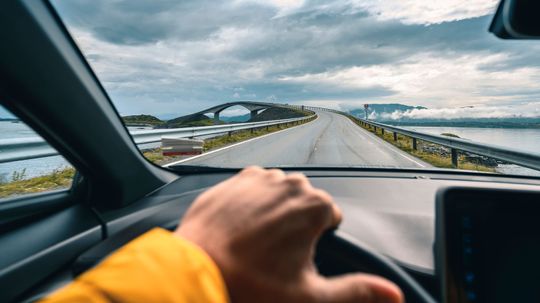Auto Parts and Systems
Auto parts and systems are the building blocks that come together to make automobiles function. Understanding how auto parts work together to form automotive systems allows drivers to confidently discuss automotive problems with their mechanics.
Learn More / Page 2
You might think towing an aerodynamic trailer would cause you less pain at the fuel pump than pulling around a box on wheels; but that's not necessarily the end of the story.
How do you know what RPM to run if you want more power? Better towing? Better fuel efficiency. Find all the answers in this comprehensive gear ratio and tire size chart.
If you know how to change a tire and can use an aerosol spray, then you already know how to use brake cleaner. It's an effective way to remove oil, dirt and debris from your vehicle's brake components.
Advertisement
Anyone with an expensive car (or even just a nice set of wheels) knows that brake dust can quickly turn your shiny rims shabby. Brake dust covers promise to protect your investment, but do they work?
The base brake system in all modern cars is very similar to the hydraulic brake system introduced in the 1920 Duesenberg. Brake testing is simple and straightforward -- only a few hand tools are necessary.
By Eric Baxter
You may have heard that by the time you discover your car has a brake problem, it's usually too late. Fortunately, the brake system is pretty simple, and it's easy to learn how to check the condition of different brake components.
One of the scariest things is to step on your brakes and feel no traction. This can happen if the pads have become too worn. That's why it's important to check them regularly. We'll show you how.
By Josh Briggs
Advertisement
There's no doubt your car's brakes are important. While other breakdowns are a bother, if your brakes fail, you could be in for a real disaster. It's all avoidable -- if you know how to test your brakes.
It's important to keep all parts of your car's brake system in proper working order -- including the caliper guide pins. All you'll need is a few hand tools and a little high-temperature grease.
A brake lathe is an efficient tool for curing noise and vibration problems, and it can often prolong the life of brake systems. Is this something you need in your own garage, or do brake lathes belong in a mechanic's shop?
Have you ever hit your brakes and had the pedal go all the way to the floor? It shouldn't happen, and you should get it checked out as soon as possible if it does.
Advertisement
Though you might not be equipped to handle a brake job -- after all, you're taking your life in your own hands -- anyone who's willing to get a little greasy can chase down the source of a brake problem. What are some tests used to determine faulty brakes?
It's a familiar scene: You're at your local auto service counter paying for an oil change and a tire rotation when your mechanic asks if you'd also like your brakes flushed. Is it really necessary?
Nobody likes the brake and shake - that is, when you hit the brakes, it feels like your steering wheel is about to wriggle free from the shaft. If your steering wheel shakes when braking, you may want to check your rotors.
If you like to change the brakes on your own car, you might want to have a brake puller handy. This is a device that pulls the drum away from the brake shoes and can be useful with older vehicles that have stuck drum brakes. Let's find out more.
By Josh Briggs
Advertisement
Your brakes use friction to slow and stop your car, but you might be surprised to learn that your brakes also need the correct lubricant to work properly. Be careful though: A little lube in the wrong place can ruin your car.
You can tell a lot about the condition of your car's brakes by how they feel when you push on them. Too hard, too soft or too gritty all mean different things. Here's a guide to help you figure it out.
By Josh Briggs
Brakes may not be the most exciting part of a car, but they're certainly one of the most crucial. Learn when to replace worn brake pads and other components.
Driving with your brake lights out puts you and your passengers at risk. So how do you identify and fix the problem? We've got some answers.
By Brian Boone & Talon Homer
Advertisement
When it comes to braking, different drivers have different reaction times. Your time can depend on driving skills, vehicle capabilities, and road conditions. Read on to test how much braking distance you need.
By Josh Briggs
Long gone are the days of start lines, stopwatches and measuring tape. Today, brake-system testers use windshield-mounted accelerometers, dynamometers and global positioning systems to gather information.
Riveted brakes are far less common now than they once were, yet still several types of brake riveting tools are out there. The tools are pretty straightforward, but we have a few tips to share with you.
Vehicles equipped with regenerative braking systems are able to recapture some of the vehicle's kinetic energy and convert it into electricity. This electricity is then used to charge the car's batteries. How is this possible?
Advertisement
The role of brake lines in a hydraulic braking system is clear -- they serve as links between the brake components in your vehicle. But did you know you can choose your brake line material?
If you have a pre-1940s classic car, chances are you only have one set of brakes. When cars were first made, they used just rear brakes. But as cars got faster, the need for front brakes became more prevalent.






























